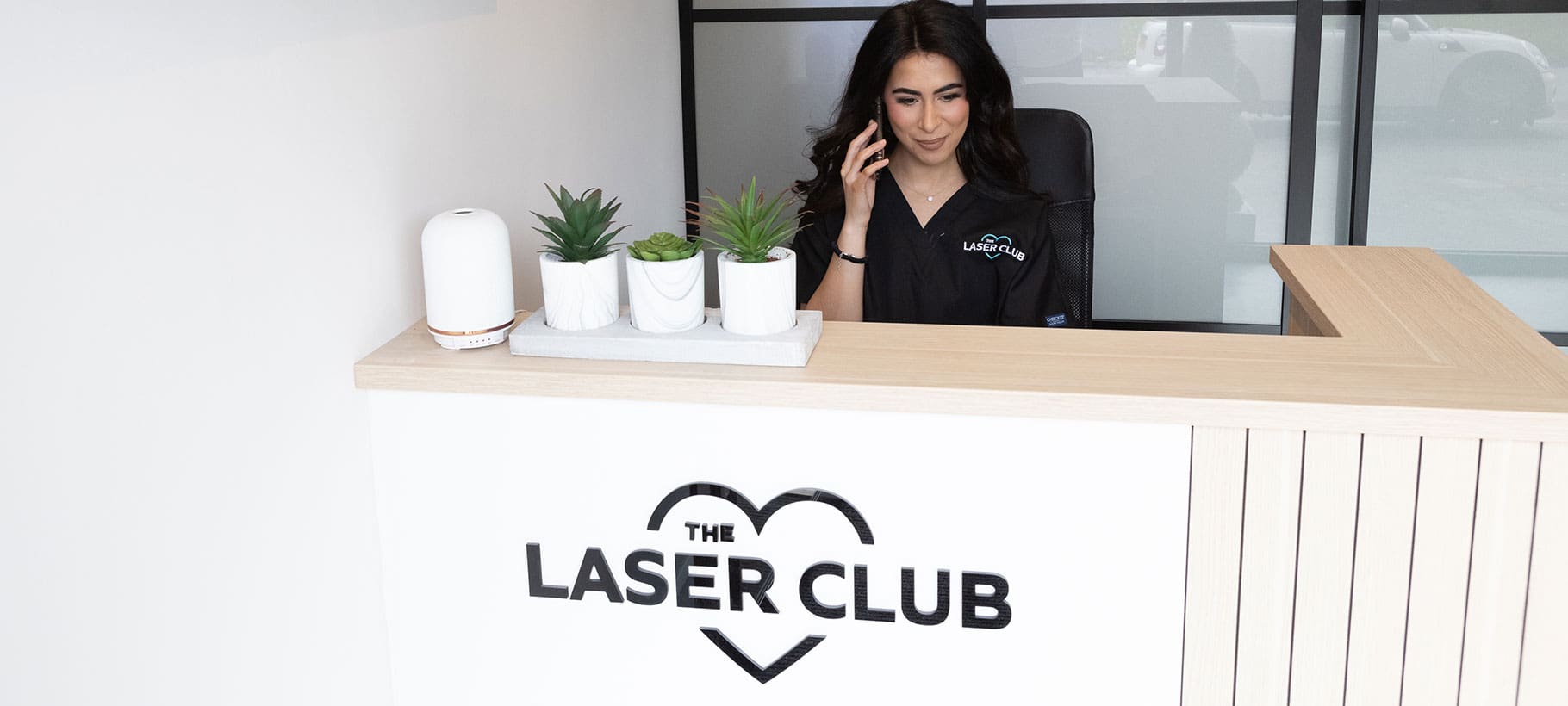
Introduction
Laser hair removal, such as the advanced laser hair removal services in Dublin offered by Laser Club, has gained immense popularity as a cosmetic procedure, providing a long-term solution to unwanted hair. Utilizing cutting-edge technology, it targets hair follicles with laser light to inhibit future growth. Despite its widespread acceptance, public concerns about the potential link between laser hair removal and cancer risk persist.
These concerns often stem from misunderstandings about the types of radiation used in laser treatments. This article aims to clarify these misconceptions by providing evidence-based information on the safety of laser hair removal. The goal is to offer readers peace of mind and help them make informed decisions about this cosmetic procedure.
Laser hair removal is not just limited to women; it is also an effective solution for many trans people who are looking to get rid of unwanted body and facial hair, as highlighted in our article on how laser hair removal is transforming the lives of trans people. Moreover, men seeking a similar solution can explore our laser hair removal for men services in Manchester.
In addition to hair removal, Laser Club also offers other beauty treatments. For those interested in pampering experiences with powerful beauty benefits, we provide some of the best facials in Dublin.
Understanding Laser Hair Removal
Laser technology has transformed cosmetic treatments, especially for hair removal. It works by using focused light beams to target and destroy hair follicles, the tiny sacs in the skin where hair grows.
How It Works
1. Selective Photothermolysis
This principle is the foundation of laser hair removal. The laser emits a specific wavelength of light that is absorbed by the pigment (melanin) in the hair. This absorption generates heat, which damages the hair follicle while leaving surrounding skin unharmed.
2. Hair Growth Cycle
To achieve the best results, multiple sessions are necessary because lasers only target hairs in their active growth phase (anagen phase). Since not all hairs are in this phase at the same time, repeated treatments ensure all follicles are eventually targeted.
Types of Lasers
Different types of lasers are used in hair removal procedures, each designed for specific skin tones and hair types:
- Alexandrite Laser: Effective for lighter skin tones, it uses a shorter wavelength and is known for its speed.
- Diode Laser: Versatile and suitable for a broad range of skin types, it penetrates deeper into the skin.
- Nd:YAG Laser: Ideal for darker skin tones due to its longer wavelength, which reduces melanin absorption in the epidermis.
- Ruby Laser: One of the oldest types but less commonly used today; best suited for fine and light-colored hair.
If you’re considering this treatment, it’s advisable to get laser hair removal before your hairs turn grey, as it can be less effective on grey hair.
Non-Ionizing Radiation
A key feature of laser hair removal is its use of non-ionizing radiation. Unlike ionizing radiation (such as X-rays or UV rays), non-ionizing radiation does not have enough energy to remove tightly bound electrons from atoms or molecules. This important distinction contributes to its safety profile since non-ionizing radiation cannot induce cancerous changes in cellular DNA.
Choosing the Right Equipment
With the increasing popularity of laser hair removal, it’s crucial to select the appropriate equipment for optimal outcomes. You may want to investigate which laser hair removal machine is considered the best for professional treatments.
Understanding Potential Regrets
While many individuals achieve positive results from laser hair removal, it’s essential to be aware of potential downsides. If you’re curious about whether people ever regret undergoing this procedure, understanding both benefits and possible drawbacks can help you make an informed choice.
The Science Behind Cancer Risks Associated with Laser Hair Removal
Understanding Cancer and Environmental Factors
Cancer develops when cells in the body grow uncontrollably, often forming tumors. This process can be triggered by various factors, including genetic mutations, lifestyle choices, and environmental exposures. Key environmental factors known to increase cancer risk include UV radiation from sunlight, which is classified as a carcinogen due to its ability to damage DNA directly.
Differentiating UV Radiation and Non-Ionizing Radiation
UV radiation, a form of ionizing radiation, has enough energy to remove tightly bound electrons from atoms, leading to potential DNA damage and an increased risk of skin cancers like melanoma. In contrast, the lasers used in hair removal treatments emit non-ionizing radiation. This type of radiation has insufficient energy to ionize atoms or molecules and therefore cannot directly damage DNA.
Non-ionizing lasers focus their energy on melanin within hair follicles, heating and destroying them without affecting surrounding tissues. Devices such as the Primelase HR by Sinclair Medical leverage this technology for effective hair removal while prioritizing safety.
Research Findings on Laser Hair Removal and Cancer Risk
Current research underscores the safety of laser hair removal concerning cancer risk. For instance:
- A study published in the Journal of Cosmetic and Laser Therapy analyzed long-term data from patients undergoing laser hair removal. It concluded there was no significant increase in skin cancer incidents among these individuals.
- Another investigation featured in Dermatologic Surgery found no evidence linking laser hair removal treatments to an elevated risk of developing skin malignancies.
By focusing on non-ionizing radiation, these treatments avoid the carcinogenic mechanisms associated with UV exposure. Available scientific literature consistently supports that laser hair removal does not cause cancer, providing reassurance for those concerned about potential risks.
Laser hair removal remains a popular choice for many seeking long-term solutions for unwanted hair without compromising their health. Interestingly, the technology behind laser treatments is also being utilized in other fields such as dentistry. For example, laser teeth whitening is becoming a popular option for those seeking effective dental aesthetic treatments.
Debunking Myths: Is There a Causal Relationship Between Laser Hair Removal and Melanoma?
Concerns about whether laser hair removal can cause cancer often come from isolated cases and anecdotal reports of melanoma. While these instances may seem alarming at first, it’s important to carefully examine them to understand their credibility.
Examination of Isolated Cases
There have been various isolated reports suggesting a possible link between laser treatments and melanoma. However, these cases are not widespread and lack substantial scientific backing. Upon closer examination, the credibility of such reports often diminishes as they tend to lack rigorous peer-reviewed research and fail to establish a direct causal relationship between the procedure and cancer development.
Larger-Scale Studies
On the other hand, numerous larger-scale studies provide a more comprehensive view of the safety profile of laser hair removal. Research consistently shows no significant evidence supporting the hypothesis that laser hair removal can cause cancer.
Key Studies:
- A study published in the Journal of Cosmetic and Laser Therapy examined thousands of patients over several years and found no increased risk of melanoma or other skin cancers.
- Another extensive review by the American Society for Dermatologic Surgery concluded that non-ionizing radiation used in laser hair removal devices does not penetrate deep enough to affect cellular DNA, reducing any potential for carcinogenic effects.
These findings align with the consensus among dermatologists and medical professionals, supporting the notion that laser hair removal is safe when conducted by qualified practitioners using appropriate equipment.
Expert Opinions on the Safety of Laser Hair Removal Treatments
Most dermatologists and medical professionals agree that laser hair removal is safe when done by qualified practitioners. Experts stress the importance of having treatments done at certified clinics with experienced staff. This helps reduce potential risks and ensures that safety measures are strictly followed.
Why Certification Matters
- Certified Clinics: Clinics that follow strict standards and regulations are more likely to provide safe and effective treatments.
- Experienced Staff: Professionals with extensive training in using laser devices can better handle any complications that may occur during the procedure.
Expert Guidelines
Leading dermatological associations recommend:
- Thorough Consultations: Prior consultations to assess skin type, hair type, and any underlying conditions.
- Tailored Treatment Plans: Personalized plans that consider individual patient needs.
These measures are extremely important. Qualified practitioners know how to use medical-grade machines properly, which leads to the best results while keeping patients safe. By going to reputable clinics for treatment, clients can benefit from both experienced professionals and advanced technology.
In addition to hair removal, laser technology has also shown promise in other areas such as reducing signs of aging. For instance, laser treatments have been explored for their potential in reversing wrinkles and fine lines, providing further evidence of the versatility and safety of these procedures when performed by qualified specialists.
Side Effects: What You Need to Know Before Getting Laser Hair Removal Done
Laser hair removal is generally well-tolerated by most patients, but it is essential to be aware of the potential side effects associated with the procedure. Understanding these effects can help set realistic expectations and prepare for any temporary discomfort.
Common Side Effects
The most frequently reported side effects include:
- Temporary Redness and Swelling: The most frequently reported side effects include redness and swelling around the treated area. These symptoms are usually mild and resolve within a few hours to a couple of days.
- Skin Irritation: Some individuals may experience skin irritation, which can manifest as itching or a slight burning sensation. Applying a soothing aloe vera gel or a cold compress typically alleviates these symptoms.
- Pigmentation Changes: Another common side effect is temporary changes in skin pigmentation. Lightening or darkening of the skin in the treated area may occur, especially in individuals with darker skin tones. These changes usually fade over time without permanent effects.
Rare but Severe Reactions
Although rare, some individuals might encounter more severe reactions:
- Scarring: In exceptional cases, improper technique or equipment settings can lead to scarring. Ensuring treatment from certified clinics with experienced staff members significantly reduces this risk. This highlights how crucial it is to use a good machine for procedures like tattoo removal, as subpar equipment can lead to undesirable outcomes.
- Blistering: Blistering can occur if the laser settings are too high or if the skin has been recently exposed to sun. While alarming, these blisters typically heal without long-term consequences and have no proven link to increased cancer risk.
It’s crucial to differentiate between normal side effects and those that need medical attention. Consulting with a qualified practitioner prior to undergoing laser hair removal treatments helps mitigate risks and ensures that any side effects are properly managed.
Understanding the common and rare side effects prepares you for laser hair removal while highlighting the importance of choosing reputable clinics staffed by skilled professionals.
Special Considerations for Individuals with Specific Skin Concerns or History Related to Cancer Risk Assessment Before Undergoing Treatment Sessions Such As Laser Hair Removal Procedures
For individuals with a history of atypical moles or skin cancer, consulting healthcare providers before undergoing laser hair removal treatments is crucial. This ensures the suitability and safety of this method for their specific skin conditions.
Key recommendations include:
- Consultation with a Dermatologist: Seek advice from a dermatologist to assess any potential risks associated with laser hair removal, given your skin history.
- Regular Skin Checks: Maintain regular skin checks to monitor any changes in existing moles or new growths, particularly if you have a history of skin cancer.
- Selecting Experienced Clinics: Choose clinics that employ skilled practitioners who can tailor treatments based on individual skin concerns.
These precautions help address the question, “Can laser hair removal cause cancer?”, by ensuring that treatments are safe and appropriate for those with specific skin concerns.
The Importance Of High-Quality Equipment And Skilled Practitioners In Minimizing Risks During Cosmetic Procedures Like Laser Hair Removal Treatments
The effectiveness and safety of laser hair removal depend on two critical factors: medical-grade machines and skilled therapists. Well-designed and properly maintained equipment ensures that treatments are both effective and safe, while experienced professionals are essential for minimizing risks associated with the procedure.
Significance Of Using Medical-Grade Machines
Medical-grade machines, such as the Primelase HR by Sinclair Medical, offer a higher standard of performance compared to consumer or lower-tier alternatives. These devices are engineered to deliver precise wavelengths of laser energy, targeting hair follicles without damaging surrounding skin tissues. Key benefits include:
- Enhanced Safety: Advanced cooling systems reduce the risk of burns and discomfort.
- Efficiency: Powerful lasers can result in quicker sessions and fewer treatments needed for optimal results.
- Versatility: Suitable for various skin tones and hair types, ensuring broader applicability.
Role Of Trained Therapists
Skilled therapists play an indispensable role in conducting safe and effective laser hair removal sessions. Their expertise allows them to:
- Assess Suitability: Determine if a client’s skin type, hair color, and medical history make them a good candidate for the procedure.
- Customize Settings: Adjust laser parameters based on individual needs to maximize efficacy while minimizing risks.
- Monitor Reactions: Identify potential adverse reactions early and take appropriate measures to address them.
Clinics like Laser Club prioritize client safety by employing highly trained therapists who have consistently earned glowing reviews. This combination of cutting-edge technology and professional expertise ensures that clients receive top-tier care.
Proper implementation of these elements not only enhances treatment outcomes but also builds trust between clients and practitioners, fostering long-lasting relationships based on confidence and satisfaction.
Final Thoughts On Laser Hair Removal And Its Potential Impact On Cancer Risk
Making informed decisions about laser hair removal requires a deep understanding of safe practices and the importance of choosing reputable clinics. When considering whether “Can laser hair removal cause cancer?”, it is crucial to base your decisions on credible information and consult with qualified professionals.
- Prioritize Well-Being: Opt for clinics with certified staff members who adhere to strict safety protocols.
- Reputable Clinics: Ensure the clinic uses medical-grade equipment, such as Primelase HR by Sinclair Medical, known for its effectiveness and safety.
- Professional Guidance: Seek advice from healthcare providers if you have specific skin concerns or a history related to cancer risk.
By following these guidelines, you can minimize risks and achieve safe, effective results from laser hair removal treatments.
FAQs (Frequently Asked Questions)
What types of lasers are used in hair removal?
Various types of lasers are used for hair removal, primarily those utilizing non-ionizing radiation. These lasers target hair follicles effectively without causing damage to surrounding skin tissue, making them a popular choice for cosmetic procedures.
Are there any side effects associated with laser hair removal?
Common side effects include temporary redness and swelling, which usually resolve quickly. Rare but severe reactions may occur, such as scarring or blistering; however, these have no proven link to an increased cancer risk.
Should individuals with a history of skin cancer consider laser hair removal?
Individuals with a history of atypical moles or skin cancer should consult healthcare providers before undergoing laser hair removal treatments. This ensures that the procedure is suitable for their specific skin concerns.
Why is it important to choose qualified practitioners for laser hair removal?
Choosing qualified practitioners is crucial because they ensure the safe and effective use of medical-grade equipment. Experienced professionals can minimize potential risks and complications during the procedure.
What should I look for in a clinic offering laser hair removal services?
When selecting a clinic for laser hair removal, prioritize those that use medical-grade machines and employ trained therapists. It’s essential to choose reputable clinics that follow strict safety protocols to ensure your well-being during treatments.







